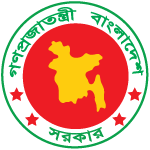Cell Phone Based Disease Surveillance System (CPBDSS)


Honorable Minister Mr. Mohammed Nasim, Ministry of Health & Family Welfare, Member of Parliament Visited Cell Phone Based Disease Surveillance System (CPBDSS), at Institute of Epidemiology, Disease Control & Research (IEDCR) on 29th May, 2016. He was accompanied by Professor Dr. Deen Mohammod Noorul Huq, Director General of Health Services and Professor Mahmudur Rahman Director, IEDCR.
Background
IEDCR introduced cell phone based disease surveillance system in Bangladesh. To initiate the process conducted behavioral risk factor surveillance system (BRFSS) pilot project in 2012 in Dhaka City Corporation area using only Banglalink subscriber’s number. The project was supported by International Association of National Public Health Institute (IANPHI) and United States Center for Disease Control and Prevention (US CDC) provided the technical assistance. We wanted to validate the process of collecting data using cell phone interview (CPI) with a face to face interview (FTFI) considering FTFI as the gold standard. The validation study was supported by Ministry of Health and Family Welfare (MOH&FW). We conducted the FTFI on a subset (401) of respondent who completed (3378) the cell phone interview. We found that the sensitivity and specificity for some indicators like smoking, diabetes were 80% and above which we considered good.
Utilizing our experience of pilot project and validation study we decided to scale up the Cell Phone Based Disease Surveillance System (CPBDSS) nationwide. Through secretary Ministry of Health and Family Welfare (MoH&FW) we requested Chairman Bangladesh Telecommunication Regulatory Commission (BTRC) to support involvement of all operators to provide subscribers number proportionate to market share so that IEDCR could conduct the surveillance using cell phone. We also involved the Association of Mobile Telephone Operators Bangladesh (AMTOB) and conducted several consultative meetings with all operators to clarify the importance and get them on board. With US CDC to conduct influenza surveillance and Food an Agricultural Organization (FAO) to conduct syndromic surveillance to foodborne illness we started nationwide CPBDSS on 2014. We conducted one round of data collection, reviewed the questionnaire and updated the software. From 2015 we started conducting conducted 3 episodes of data collection to see the seasonality of communicable disease and the proportion of influenza and foodborne illness in the community.
Ongoing activities In 2016 in addition to influenza and syndromic approach to foodborne illness we started Behavioral Risk Factor (BRF) and Non-communicable disease (NCD) surveillance with the support from NCD Control Program of Directorate General of Health Services (DGHS) and funding from Health Population Nutrition Sector Development Program (HPNSDP) of Ministry of Health and Family Welfare (MoH&FW). This is the first nationwide community based BRF and NCD surveillance. We will be generating divisionally representative data of the respondents.
Challenges Faced In spite of full support of BTRC and AMTOB we face difficulties with some operators in getting active subscribers’ numbers. We couldn’t mask the caller identification number yet with MOH&FW or IEDCR which is important for authentication of the surveillance.
Way forward We need to find out ways to capture all strata of population especially elderly, women and hardcore poor who doesn’t carry a mobile phone. We opt generate district level representative data. With our experience, using cell phone for data collection is an effective tool to conduct community level surveillance for Bangladeshi population.
Updated June 13, 2016
Communication:
This e-mail address is being protected from spambots. You need JavaScript enabled to view it

